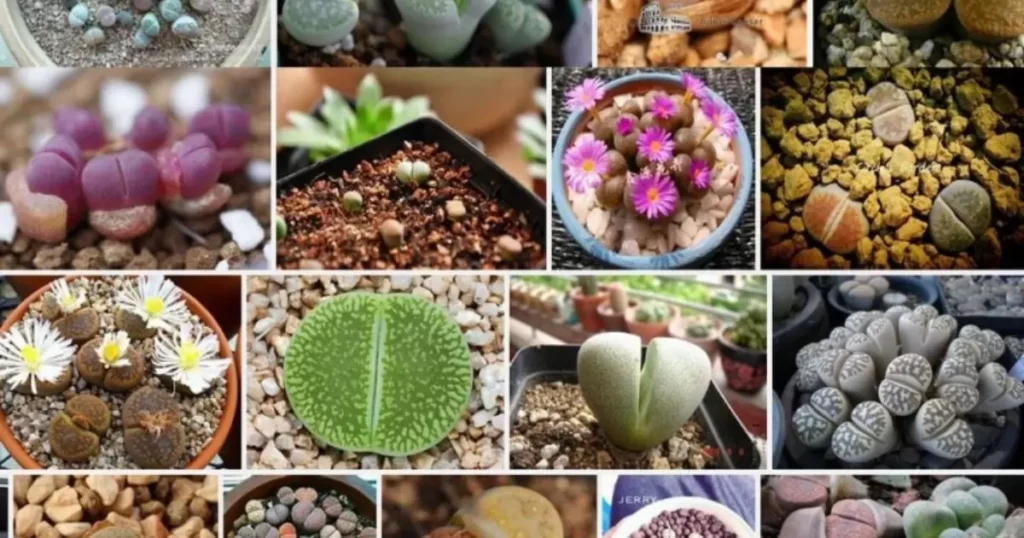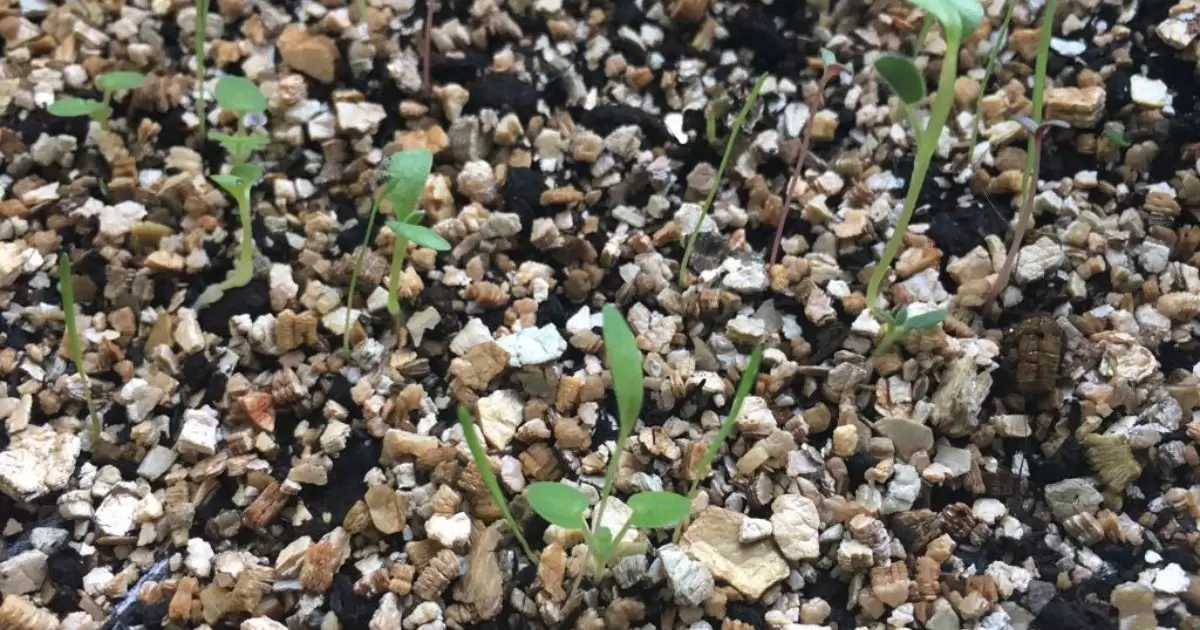Growing succulents from seeds involves planting tiny succulent seeds in a suitable soil mix. These seeds require well-draining soil and bright, indirect sunlight. Patience is key, as succulent seedlings take time to develop and should be kept consistently moist until they establish. With proper care, you can enjoy a unique and rewarding succulent garden from seedlings.
Ready to embark on an exciting journey into the world of succulent gardening? Discover the secrets of nurturing beautiful succulent plants from their very beginnings. Learn how to grow succulents from seeds and watch your green oasis flourish. Get your hands dirty and your thumbs green by exploring the fascinating process of succulent seed cultivation.
Growing succulents from seeds involves sowing tiny succulent seeds in well-draining soil, typically a mix of perlite and potting soil. These seeds require consistent moisture and indirect sunlight to germinate and grow into mature succulent plants, making it a rewarding and budget-friendly way to expand your succulent collection.
Selecting Succulent Seeds

Before you can start growing succulents from seeds, it’s essential to choose the right seeds. Here are some key factors to consider.
Seed Variety
Succulents come in a wide range of species and varieties, each with its unique characteristics. Do some research to find out which types of succulents you’d like to grow from seeds. Some popular options include Echeveria, Sedum, and Crassula.
Seed Source
Ensure that you obtain high-quality succulent seeds from a reputable source. When it comes to succulents, many people wonder, Fast do succulents grow Look for suppliers with positive reviews and a track record of providing viable seeds. You can find succulent seeds in local nurseries, garden centers, or online stores dedicated to succulent enthusiasts.
Freshness
The freshness of the seeds is crucial. Fresh seeds have a higher germination rate. Check the seed packaging for expiration dates or any information regarding seed viability.
Materials and Tools
| Step | Description |
| Selecting Seeds | Choose the variety of succulent seeds you want to grow. |
| Obtain seeds from a reputable source. | |
| Materials and Tools | Prepare seed containers with drainage holes. |
| Create a well-draining soil mix with perlite, vermiculite, and potting soil. | |
| Acquire the succulent seeds. | |
| Employ a clear plastic dome or plastic wrap to create a mini greenhouse effect. | |
| Consider using grow lights if growing indoors. | |
| Sowing Seeds | Fill containers with soil mix, leaving space for watering. |
| Sprinkle seeds evenly on the soil surface, avoiding overcrowding. | |
| Press seeds lightly into the soil. | |
| Cover containers with plastic to maintain humidity and place in bright, indirect sunlight. | |
| Germination and Early Care | Remove plastic covering when seedlings appear. |
| Transplant seedlings to individual pots or trays as they grow. | |
| Adjust watering to allow the soil to dry out between waterings. | |
| Gradually expose seedlings to direct sunlight to avoid sunburn. | |
| Tips and Troubleshooting | Be patient, as succulent seedlings grow slowly. |
| Monitor for pests like mealybugs and aphids and remove them. | |
| Avoid overcrowding by transplanting if necessary. | |
| Prune mature succulents to maintain their shape and size. | |
| Use diluted succulent fertilizer during the growing season. | |
| Consider replanting in larger pots as succulents mature. |
To get started, you’ll need the following materials and tools.
Seed Containers
Choose small seed trays or pots with drainage holes to ensure proper water drainage. Miniature pots or seedling trays work well for succulent seeds.
Soil Mix
Create a well-draining soil mix for your succulent seeds. A typical mix consists of perlite, vermiculite, and potting soil. This mixture helps prevent overwatering and root rot.
Seeds
The succulent seeds of your choice.
Spray Bottle
To provide a gentle mist of water for initial watering.
Clear Plastic Dome or Plastic Wrap
To create a mini greenhouse effect and maintain humidity levels.
Grow Lights
If you’re growing succulents from seeds indoors, consider using grow lights to ensure they receive adequate light.
Sowing Succulent Seeds
Now that you’ve gathered your materials, it’s time to sow the succulent seeds. Follow these steps for successful germination:
Fill Seed Containers
Fill your seed trays or pots with the prepared soil mix, leaving a small space at the top for easy watering.
Sow Seeds
Sprinkle the succulent seeds evenly on the soil surface. Avoid overcrowding, as this can lead to competition for resources as they grow.
Press Seeds Lightly
Press the seeds lightly into the soil surface. Succulent seeds are tiny, and they require good soil-to-seed contact for successful germination.
Mist the Soil
Use a spray bottle to moisten the soil lightly. Be careful not to drench it, as succulent seeds are susceptible to rot in overly wet conditions.
Cover with Plastic
Place a clear plastic dome or plastic wrap over the seed containers to create a mini greenhouse. This helps maintain humidity and temperature levels.
Provide Indirect Light
Place the seed containers in an area with bright, indirect sunlight. If you’re growing succulents from seeds indoors, consider using grow lights to ensure they receive adequate light.
Maintain Humidity
Check the moisture level regularly and mist the soil as needed to keep it consistently moist but not waterlogged. The plastic covering helps retain moisture.
Germination and Early Care
Succulent seeds typically germinate within a few days to a few weeks, depending on the species. As your succulent seedlings begin to emerge, it’s important to provide them with the right care and attention.
Remove Plastic Covering
Once the seedlings appear, remove the plastic dome or wrap to allow for better air circulation and prevent mold growth.
Transplanting
When the seedlings have grown large enough to handle, you can transplant them into individual pots or trays. Be gentle to avoid damaging the delicate roots.
Watering
As your succulent seedlings grow, adjust your watering routine. Water sparingly but thoroughly, allowing the soil to dry out between waterings. Overwatering can lead to root rot, a common issue with succulents.
Gradual Sunlight Exposure
Introduce your succulent seedlings to direct sunlight gradually. Start with a few hours of morning or late afternoon sunlight and increase exposure over time to avoid sunburn.
Growing Succulents from Seeds: Tips and Troubleshooting
Here are some additional tips and solutions to common issues that may arise when growing succulents from seeds.
Patience Is Key
Succulent seedlings grow slowly, so be patient and give them time to develop.
Protect from Pests
Keep an eye out for common succulent pests like mealybugs and aphids. If you spot any pests, remove them promptly.
Avoid Overcrowding
If your seedlings become overcrowded, consider transplanting them into larger containers to give them more space.
Pruning
Once your succulents have grown into mature plants, you may need to prune them to maintain their shape and size.
Fertilization
Use a balanced, diluted succulent fertilizer during the growing season to provide essential nutrients for healthy growth.
Replanting
As your succulents mature, you may need to transplant them into larger pots to accommodate their growing root systems.
FAQ’S
What is the easiest succulent to grow from seed?
The Echeveria is often considered one of the easiest succulents to grow from seed, thanks to its resilient nature and relatively fast germination.
How do you grow succulents for beginners?
For beginners, start with low-maintenance succulent varieties, use well-draining soil, and water sparingly, allowing the soil to dry between watering.
What do succulent seeds look like?
Succulent seeds vary by species but are typically tiny, resembling fine dust or small granules, and come in a range of colors, from black to brown and even white.
Conclusion
Growing succulents from seeds is a delightful and budget-friendly way to Grow Succulents From Seeds and build your succulent collection. It allows you to witness the entire lifecycle of these remarkable plants, from the tiny seeds to flourishing succulent gardens. By carefully selecting the right seeds, providing optimal growing conditions, and nurturing your seedlings, you can cultivate a beautiful and unique succulent garden that’s all your own.
Remember that success with succulent seed propagation requires patience and dedication, but the rewards are well worth the effort. So, why wait? Start your succulent seed-growing adventure today and watch your garden flourish with beauty and charm.










